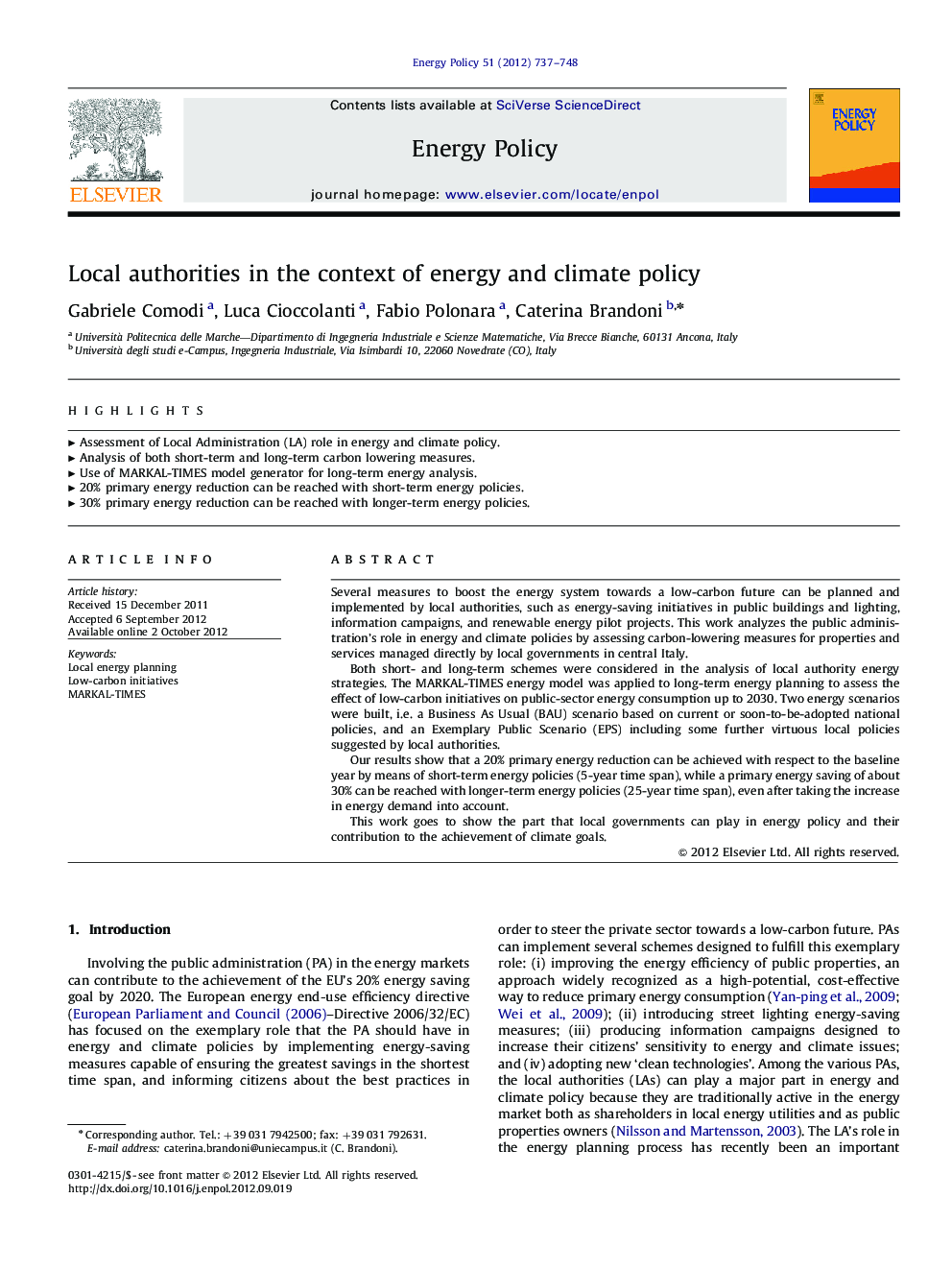| Article ID | Journal | Published Year | Pages | File Type |
|---|---|---|---|---|
| 995648 | Energy Policy | 2012 | 12 Pages |
Several measures to boost the energy system towards a low-carbon future can be planned and implemented by local authorities, such as energy-saving initiatives in public buildings and lighting, information campaigns, and renewable energy pilot projects. This work analyzes the public administration's role in energy and climate policies by assessing carbon-lowering measures for properties and services managed directly by local governments in central Italy.Both short- and long-term schemes were considered in the analysis of local authority energy strategies. The MARKAL-TIMES energy model was applied to long-term energy planning to assess the effect of low-carbon initiatives on public-sector energy consumption up to 2030. Two energy scenarios were built, i.e. a Business As Usual (BAU) scenario based on current or soon-to-be-adopted national policies, and an Exemplary Public Scenario (EPS) including some further virtuous local policies suggested by local authorities.Our results show that a 20% primary energy reduction can be achieved with respect to the baseline year by means of short-term energy policies (5-year time span), while a primary energy saving of about 30% can be reached with longer-term energy policies (25-year time span), even after taking the increase in energy demand into account.This work goes to show the part that local governments can play in energy policy and their contribution to the achievement of climate goals.
► Assessment of Local Administration (LA) role in energy and climate policy. ► Analysis of both short-term and long-term carbon lowering measures. ► Use of MARKAL-TIMES model generator for long-term energy analysis. ► 20% primary energy reduction can be reached with short-term energy policies. ► 30% primary energy reduction can be reached with longer-term energy policies.
